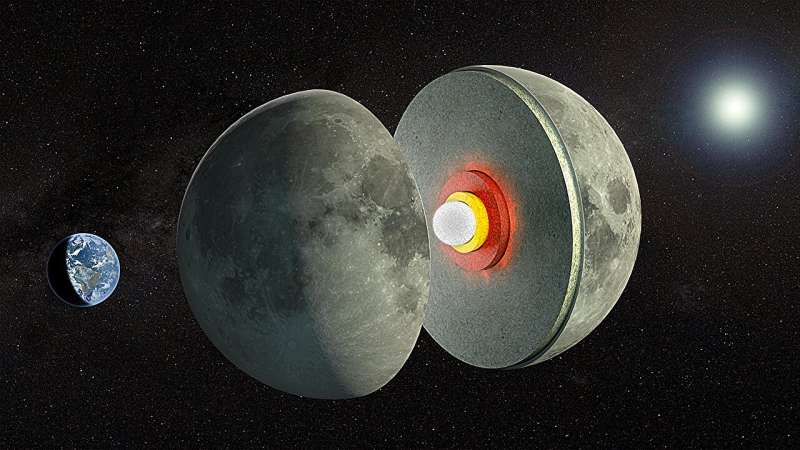We know that beneath its crater-pocked silicate crust, the moon has an olivine mantle and a metallic core. Some research has also suggested that a partially molten layer may lie at the base of the otherwise solid mantle, sandwiched between it and the solid core. But other evidence disagrees.
Now, Sander Goossens and colleagues present new measurements in AGU Advances that support the existence of this somewhat melty transitional zone, which could have key implications for our understanding of the moon’s structure, origin, and evolution.
The new evidence arose from an analysis of tides on the moon. Just as the gravitational pull of the moon and the sun periodically distorts Earth’s shape and gravitational field—causing the oceans to rise and fall—the Earth and the sun both tug on the moon, causing tidal effects that warp the moon’s shape and gravity.
The moon’s response to tidal forces depends, in part, on its deep interior structure, so researchers can study this response for clues about the lunar subsurface.
Earlier research had already explored the moon’s gravity changes in response to tides over the course of a month. In the new work, researchers captured yearly changes for the first time by analyzing data from NASA’s satellite-based Gravity Recovery and Interior Laboratory (GRAIL) mission and the Lunar Reconnaissance Orbiter.
Next, they incorporated both the monthly and yearly lunar gravity changes, along with other information such as the average density of the moon, into a model simulating the nature of the moon’s interior. They found that without including a softer layer at the base of the mantle, it was impossible for the model to reproduce the observed gravity measurements. In other words, a partly gooey deep mantle layer is highly likely to exist, this research suggests.
The researchers speculate that if it does exist, the partially molten layer may consist of a titanium-rich material called ilmenite. However, more research is needed to better understand this layer and determine the heat source that maintains the melts over presumably billions of years.
More information:
Sander Goossens et al, A Low‐Viscosity Lower Lunar Mantle Implied by Measured Monthly and Yearly Tides, AGU Advances (2024). DOI: 10.1029/2024AV001285
Provided by
American Geophysical Union
This story is republished courtesy of Eos, hosted by the American Geophysical Union. Read the original story here.
Citation:
Lunar gravity measurements hint at a partially molten mantle layer (2024, September 30)
retrieved 30 September 2024
from https://phys.org/news/2024-09-lunar-gravity-hint-partially-molten.html
This document is subject to copyright. Apart from any fair dealing for the purpose of private study or research, no
part may be reproduced without the written permission. The content is provided for information purposes only.

